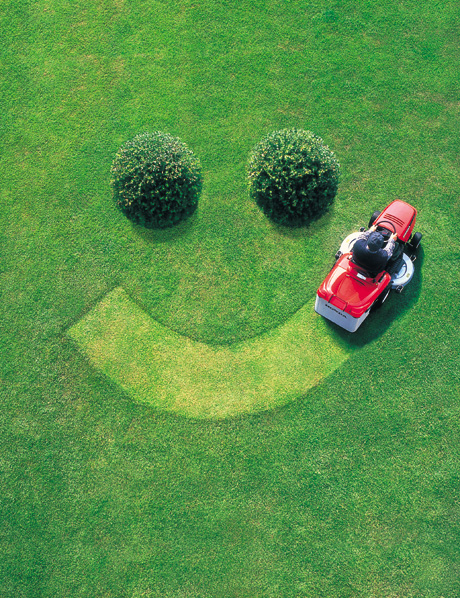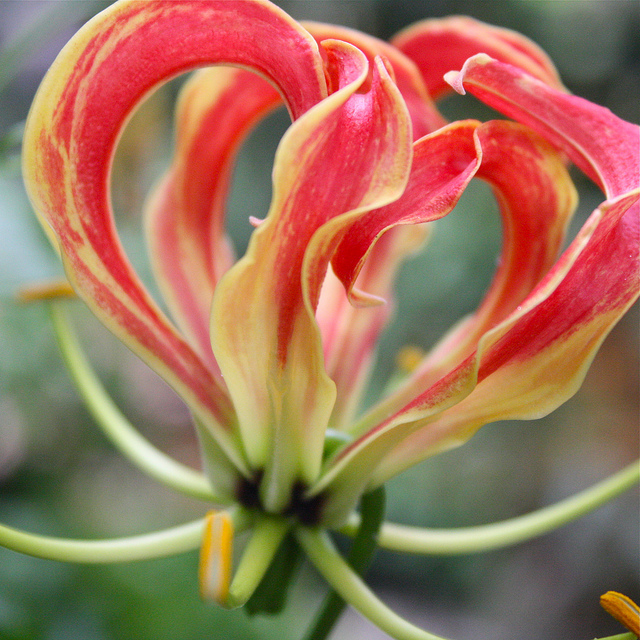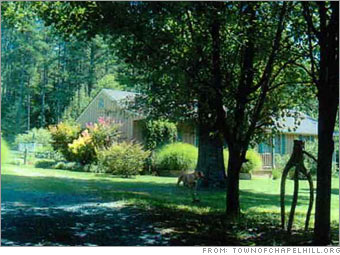Timing
How many of you have jumped the gun and fertilized your lawn too early? Now that it’s May and our soil temperatures are  warming up and our lawns have largely recovered from winter, it’s time to fertilize. Fertilizer applied to our warm season lawns (Bermuda, centipede, zoysia, St. Augustine) before May is not as effective as fertilizer applied now. Before the soil warms up, grass roots won’t take up the nutrients, and the fertilizer will be washed away by rain before the grass can use it—or worse yet, it will benefit only the cool season weeds. Warm season lawns should be fertilized only between May and early August. Fertilizing later than that (especially with centipede) can result in damage the following winter.
warming up and our lawns have largely recovered from winter, it’s time to fertilize. Fertilizer applied to our warm season lawns (Bermuda, centipede, zoysia, St. Augustine) before May is not as effective as fertilizer applied now. Before the soil warms up, grass roots won’t take up the nutrients, and the fertilizer will be washed away by rain before the grass can use it—or worse yet, it will benefit only the cool season weeds. Warm season lawns should be fertilized only between May and early August. Fertilizing later than that (especially with centipede) can result in damage the following winter.
Test the soil
There’s no way to tell by looking at it what fertilizer formulation is best for your lawn. Chemical analysis is needed. Warm season grasses will appreciate a low to moderate dose of nitrogen (the first of the three numbers on a bag of fertilizer), but whether your lawn would do best with 10-10-10, 15-0-15, 16-4-8, or some other formulation (or organic equivalent) can only be determined by measuring the phosphorus and potassium (the second and third numbers on the bag) present in the soil. The Clemson Extension basic soil test costs only six dollars and will tell you what fertilizer is best and also whether your lawn needs lime (or sulfur) to alter the pH. Clemson has a fact sheet on soil testing here. Locally, soil samples can be taken to the Richland and Lexington Extension offices.
If you hire out the maintenance of your lawn, make sure the company working for you fertilizes according to a chemical analysis of your soil. Do not hire a one-fertilizer-fits-all firm—all lawns and the soil on which they’re growing are not the same!
Avoid fertilizer burn
Seen any lawns yet this spring that are sporting yellow stripes? These are from fertilizer burn, where too much fertilizer has been applied—usually in areas where the applicator has overlapped where he’s already applied, creating a stripe that’s received a double dose. The best way to apply fertilizer is to use a spreader set at the minimum rate (lowest setting) and applying in one direction, then another direction, and then another until the recommended amount is dispensed (try north-south passes, followed by east-west passes, followed by diagonal ones). This way you’ll avoid the likelihood of stripes from overlapping passes, and you’ll overcome a serious drawback of spreaders—their application rate adjusters are notoriously ill-calibrated. By evenly applying the recommended amount of fertilizer to your lawn, you should avoid fertilizer burn. Unless rain is imminent or the fertilizer packaging says you don’t have to, you’ll likely need to water-in the fertilizer by running the sprinkler. Give the lawn a good soaking.
How much do you need?
Soil test recommendations will tell you to apply a specific number of pounds of fertilizer per thousand square feet of lawn, so you’ll need to know the area (sq. footage) of your lawn. Don’t rely on the real estate figures to determine this. Your lawn is not the same size as your lot—the house, driveway, flower and shrub beds, wooded areas, sidewalks, pools, playgrounds, etc. reduce the area that is lawn. If your lawn is rectangular, determining the area is simply multiplying the length times the width. The area of most lawns, even those of highly irregular shapes, can be approximated by dividing the shape up into smaller rectangles and adding the square footages from each. If necessary, use the geometric formulas for triangles and circles you learned in school (or ask a kid who’s learned it more recently for help). Here’s a factsheet that might help.
Weed-n-feed? Not!
When shopping for fertilizer, you’ll notice that many products contain both a fertilizer and a weed control. Generally, you’ll obtain better results if you do these two things separately, and you may not need to do both. Don’t use an herbicide if you don’t need to, and make sure you’re using the right one if you do (see last month’s column). Some of the fertilizer products you’ll see for sale will contain pre-emergent herbicides. These should have been applied in winter, or late last summer, not in May. They won’t do a bit of good this time of year, and might do some harm (some herbicides will stress the grass, and some have been linked to ecological and health concerns). If you decide you need to use a post-emergent weed-n-feed product, make sure that both the fertilizer formulation is correct for your lawn and the herbicide it contains is right for the type of weeds you wish to control.
How often?
Compared to the other warm season grasses, centipede is a light feeder; it only needs about one-third the fertilizer required by St. Augustine, Bermuda and zoysia. Clemson recommends two light feedings for centipede, but some folks will do only one. I’ve had more than one person tell me that they’ve heard centipede doesn’t even need any fertilizer. However, field experiments by turf scientists show that under normal conditions, it will perform much better with fertilizer. Zoysia, Bermuda and St. Augustine are usually fertilized two or three times between May and mid-August. If you have to skip a feeding, don’t double the dose next time, or you might end up damaging your lawn.
Final thoughts
A little fertilizer does a lawn good. More is not necessarily better—you can end up burning the lawn if you overdo it, and excessive fertilization can lead to thatch build-up and disease or insect problems.
Fertilizer products are usually less than one-third fertilizer; the rest of the product is largely comprised of salts. It’s the salt that damages the lawn when too much fertilizer is applied.
Iron applied to lawn grasses, especially centipede, which naturally has a lighter color, can induce the lawn temporarily to be a darker green. Applying iron will not improve the health of the grass unless iron is in short supply, but iron deficiency in our local soils seems to be quite rare.
Don’t “winterize” your lawn. This is just a way for fertilizer vendors to extract more green from lawn owners. If you think your lawn might need something in the fall, do a soil test so you know for sure what it is and how much of it your lawn needs.
Don has degrees in biology from Duke, Northwestern and Florida State. He has worked for Clemson Extension in Richland County since 2000, assisting thousands of consumers with landscape, garden, wildlife and pest control questions. He is also the owner of Southeastern Environmental Design, a landscape coaching, consulting and design service. He’d be happy to help you master your landscape, whether you need extensive help, or just an hour or two of instruction on how to do it yourself.





